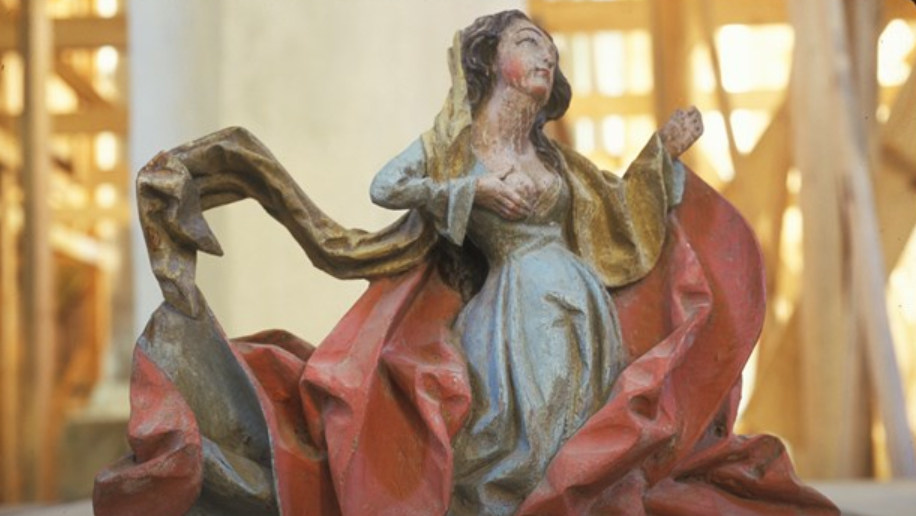The illicit trade in cultural property is one of the world's oldest and most profitable forms of criminal activity - but now efforts by the UN and law enforcement agencies across the world are helping to bring down these global operations.
Last year alone, more than 37,000 cultural objects - including archaeological artifacts, works of art, coins, and musical instruments - were seized during an international operation carried out by Interpol, and other organizations, together with law enforcement and customs authorities from 23 countries.
According to Interpol, Ukrainian customs authorities intercepted 87 historically valuable items, including icons of Saint Seraphim of Sarov and ancient coins that smugglers tried to illegally export to Poland, Moldova, and Romania.
In Spain, investigators uncovered a group that looted archaeological sites in the province of Cáceres, using metal detectors to extract thousands of Roman coins and sell them through social media.
In Greece, three people were arrested for attempting to sell five Byzantine icons for $80,000.
International cooperation
According to the UN Office on Drugs and Crime ( UNODC ), the smuggling of cultural property ranks alongside arms and drug trafficking as the most profitable illicit trades.
Yet unlike other forms of trafficking, the trade in cultural property is not prohibited outright.
High demand for antiquities and artworks, combined with weak regulation, makes the market highly lucrative and relatively low risk, especially during times of political instability, war and social upheaval when shifting priorities often leave archaeological sites and museums unguarded.
Organised criminal networks take advantage of crises, operating through complex supply chains and profiting from both the legal and black markets.
Speaking to UN News ahead of the International Day Against Illicit Trafficking in Cultural Property , marked annually on 14 November, the UN cultural organization, UNESCO 's Krista Pikkat, said: "Illicit trafficking and the thefts and illicit transfers of cultural property really touches issues like cultural rights, cultural identity, our memory and also the communities and their history."
Increasingly, traffickers also turn to online platforms and auctions to sell stolen items, including objects recovered from underwater archaeological sites.
UNESCO condemned the October 2025 theft of "eight priceless cultural objects" from the storied Louvre museum in Paris, France, warning that such crimes "jeopardise the conservation, study and transmission of valuable historical artefacts."
Terrorism financing
The organization emphasized that illicit trafficking fuels global criminal networks linked to money laundering, tax evasion, and even terrorism financing.
Since 2023, UNESCO has trained more than 1,200 museum and customs professionals from 80 countries to strengthen legal frameworks, train, and raise public awareness.
"We're also collaborating with some of our partners, for instance, the International Atomic Energy Agency ( IAEA ), to see how nuclear technology can be applied in the provenance research. So, it's also interesting to see how the new technologies in artificial intelligence actually provide us with new opportunities in the fight against illicit trafficking," Ms. Pikkat added.
In September, UNESCO launched the world's first Virtual Museum of Stolen Cultural Objects , using 3D modeling and virtual reality to display digital replicas of stolen items.
The platform includes educational materials, testimonies from affected communities, and examples of successful restitution. "The idea behind the museum," said Ms. Pikkat, "is that one day it will be empty."
She shared a personal example involving her home country, Estonia, which proposed several altar sculptures from a small island church to the museum's collection.

Crafted by Lübeck artisans in the 16th century, these pieces reflect Estonia's historic ties to the Hanseatic League.
Their true worth, she emphasized, lies not in money but in their historical, cultural, and spiritual significance. UNESCO warns that a society deprived of its heritage loses part of its identity and its foundation for future development.
The UN culture agency continues to support countries in efforts to identify and recover stolen objects, including in Central Asia where artifacts have been trafficked from Afghanistan.
Digital tools such as electronic registries, databases, and blockchain technology now assist in tracing the provenance of antiquities.
Authorities urge buyers to always request official documents to prove origin, and avoid unknown online sellers. Suspicious items can be reported to local law enforcement or directly to Interpol.
Each repatriated artifact restores a precious link between past and present.






